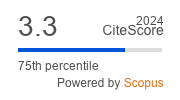Article | Open Access
Durable Homelessness: From Negotiations to Emulation
| Views: | 3273 | | | Downloads: | 1500 |
Abstract: In recent decades, Sweden has seen extensive change in its housing policy, with emphasis shifting from “good housing for all” to marketisation and the supposed benefits of private ownership (Bengtsson, 2013; Grander, 2018). Consequently, Swedish society is now facing increasing homelessness rates, including whole new groups of social service clients due to housing shortages and people’s difficulties accessing the housing market. This article examines the complexities emerging from diverging institutional frames and points specifically to a dividing line between those who can access housing independently and those who need support from the social services. The article describes how such a categorical division/dividing line is institutionalised in the organisation of the social services’ work with homelessness and points to causes and effects of this situation. The case study is based on interviews and documents. The interviewees are staff from the municipal social services and the municipal public housing company. Our theoretical point of departure is Tilly’s (1999) “categorical inequality,” using exploitation, opportunity hoarding, emulation, and adaptation to explain how homelessness is (created and) maintained in our case study. The results show the dependency of social services on external actors and demonstrate the problematic consequences both for those referred to social services and for the practical work within them, including a requirement to stringently control clients. The results further show how it is possible for the social services to maintain collaboration with (public) housing companies at the same time as the most vulnerable clients are permanently denied housing.
Keywords: homelessness; social housing; social services
Published:
© Kristina Carlsson Stylianides, Verner Denvall, Marcus Knutagård. This is an open access article distributed under the terms of the Creative Commons Attribution 4.0 license (http://creativecommons.org/licenses/by/4.0), which permits any use, distribution, and reproduction of the work without further permission provided the original author(s) and source are credited.


